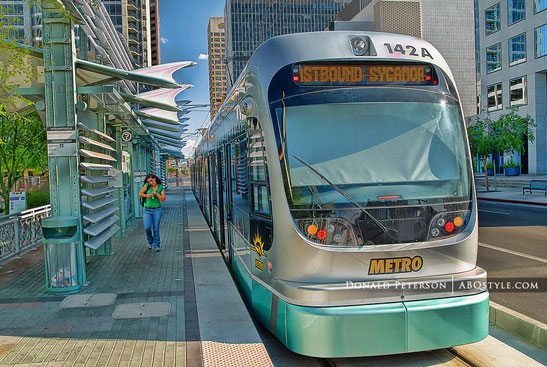Arizona senior Senator Kyrsten Sinema applauded the $158 million Capital Investment Grant awarded by the U.S. Department of Transportation for Valley Metro’s Northwest Light Rail Extension Phase II—critical funding necessary to complete the project. The grant now advances for Congressional review.
“Today’s funding announcement represents a critical next step in the Northwest Light Rail Extension. Investing in Arizona’s public transit creates jobs, expands transportation options, and grows Arizona’s economy. The bipartisan Infrastructure Investment and Jobs Act I negotiated with Senate Republicans and the White House includes historic investments in public transit projects like this, and I’ll continue supporting crucial infrastructure investments in our state and creating opportunities for all Arizonans,” said Arizona senior Senator Kyrsten Sinema, lead author of the bipartisan Infrastructure Investment and Jobs Act.
READ ALSO: Senate approves Sinema-led Infrastructure Investment and Jobs Act
The Northwest Light Rail Extension Phase II will expand access to major destinations along the existing light rail line—including educational institutions, employment centers, entertainment areas, and Phoenix Sky Harbor. The 1.6-mile extension will connect 19thAvenue and Dunlap to Metrocenter Mall at approximately 29th Avenue and Dunlap. The project includes three transit stations, a multi-modal transit center, a parking garage, and public art.
Funding of the Northwest Light Rail Extension project will expand Arizonans’ access to reliable public transportation and connect them to more economic opportunities,” said Arizona U.S. Senator Mark Kelly, a member of the Senate Environment and Public Works Committee. “Upgrading and modernizing our transportation infrastructure remains one of my top priorities which is why I worked to secure key investments in the bipartisan infrastructure bill. I will continue working to ensure that Arizonans see more critical investments into our state’s infrastructure.”
“Projections tell us this new section of rail will serve 5,700 daily riders, and that the majority of riders will come from households without cars, opening up new options for good jobs and a good education,” said Mayor Gallego. “This will stand as a legacy project in Councilmember Ann O’Brien’s district, and for Councilmember Laura Pastor, who I recently appointed to represent Phoenix on the Valley Metro Rail Board of Directors.”
“Years of work and advocacy have made this project possible. When it’s complete light rail will be a new connection to the Northwest Valley, opening it up to new economic opportunities—jobs, private and public investments, education, health care, social services and more,” said Rep. Greg Stanton.
“As America’s fifth-largest city, Phoenix requires robust infrastructure that brings better jobs and opportunities for our residents,” said Rep. Ruben Gallego. “The Biden Administration recognizes these needed investments, and I’m excited by the announcement of full funding for the Northwest Light Rail extension. Whether going to work, out to a restaurant, or to shop, this redevelopment will connect our city in a new, innovative way.”
“Moving a million more people across the Valley in the next three to five years is our regional transportation challenge,” said Valley Metro Rail Board Chair and Mesa Councilmember Francisco Heredia. “The Northwest Extension Phase II will be instrumental in increasing access, connecting neighborhoods, reducing future congestion and, ultimately, providing high-quality, affordable public transportation to generations. Thank you to our partners at DOT and FTA for sharing our vision, now and into the future.”
Sinema’s bipartisan Infrastructure Investment and Jobs Act makes the strongest investment ever in American public transit with $39.2 billion to expand transit systems, increase accessibility, and fund the nation’s transit system repair backlog, estimated at more than 24,000 buses; 5,000 rail cars; 200 stations; and thousands of miles of track, signals, and power systems—and the biggest investment in passenger rail since the creation of Amtrak.




